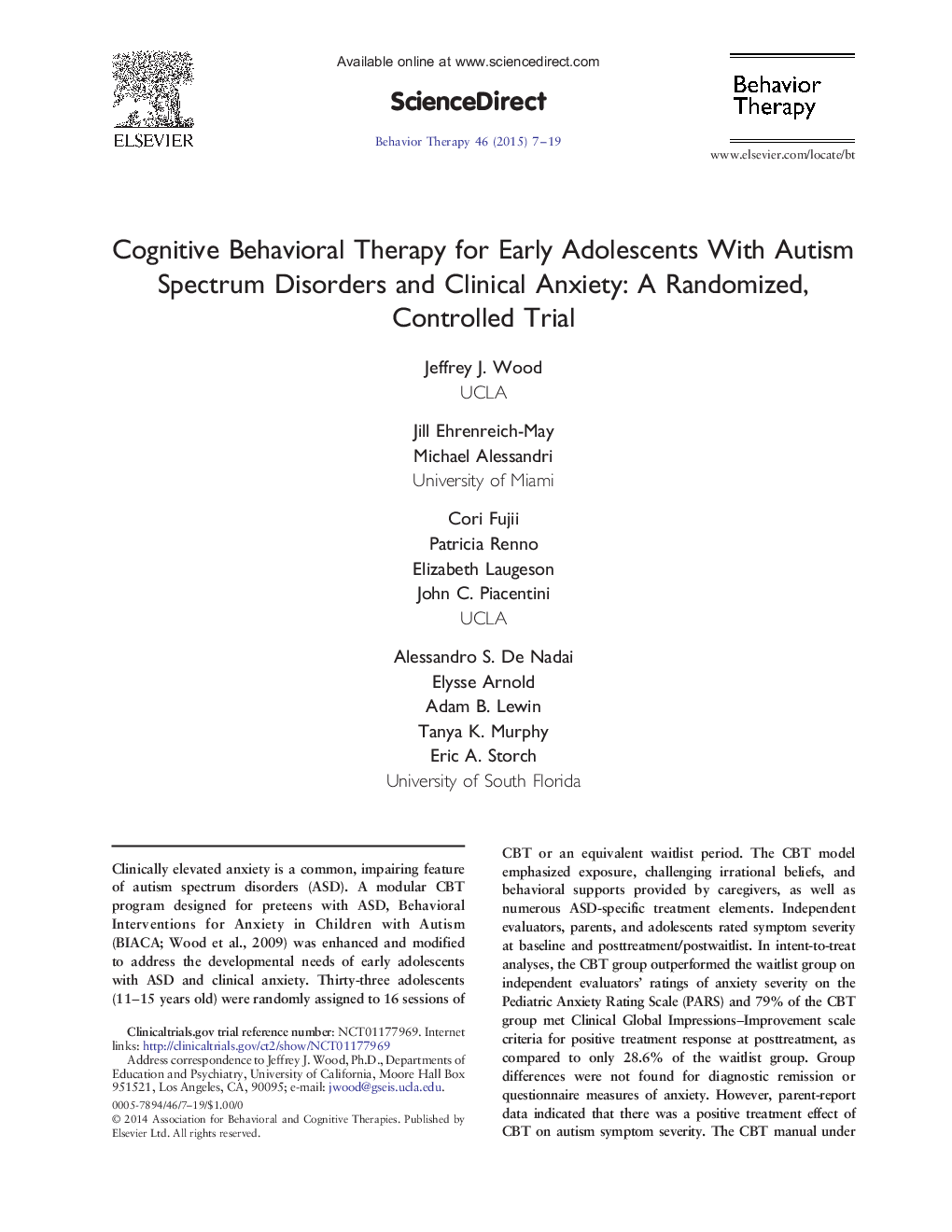| Article ID | Journal | Published Year | Pages | File Type |
|---|---|---|---|---|
| 901195 | Behavior Therapy | 2015 | 13 Pages |
•Clinically elevated anxiety is common among adolescents with high functioning autism spectrum disorders.•A CBT program for youth with ASD outperformed a 4-month waitlist condition.•The CBT program showed greater improvement in parent-rated autism symptom severity at posttreatment compared to waitlist.•Comparison to an active treatment condition is a logical next step in evaluating the intervention program.
Clinically elevated anxiety is a common, impairing feature of autism spectrum disorders (ASD). A modular CBT program designed for preteens with ASD, Behavioral Interventions for Anxiety in Children with Autism (BIACA; Wood et al., 2009) was enhanced and modified to address the developmental needs of early adolescents with ASD and clinical anxiety. Thirty-three adolescents (11–15 years old) were randomly assigned to 16 sessions of CBT or an equivalent waitlist period. The CBT model emphasized exposure, challenging irrational beliefs, and behavioral supports provided by caregivers, as well as numerous ASD-specific treatment elements. Independent evaluators, parents, and adolescents rated symptom severity at baseline and posttreatment/postwaitlist. In intent-to-treat analyses, the CBT group outperformed the waitlist group on independent evaluators’ ratings of anxiety severity on the Pediatric Anxiety Rating Scale (PARS) and 79% of the CBT group met Clinical Global Impressions–Improvement scale criteria for positive treatment response at posttreatment, as compared to only 28.6% of the waitlist group. Group differences were not found for diagnostic remission or questionnaire measures of anxiety. However, parent-report data indicated that there was a positive treatment effect of CBT on autism symptom severity. The CBT manual under investigation, enhanced for early adolescents with ASD, yielded meaningful treatment effects on the primary outcome measure (PARS), although additional developmental modifications to the manual are likely warranted. Future studies examining this protocol relative to an active control are needed.
